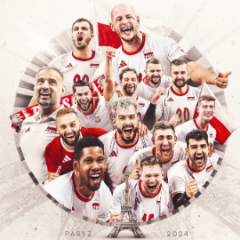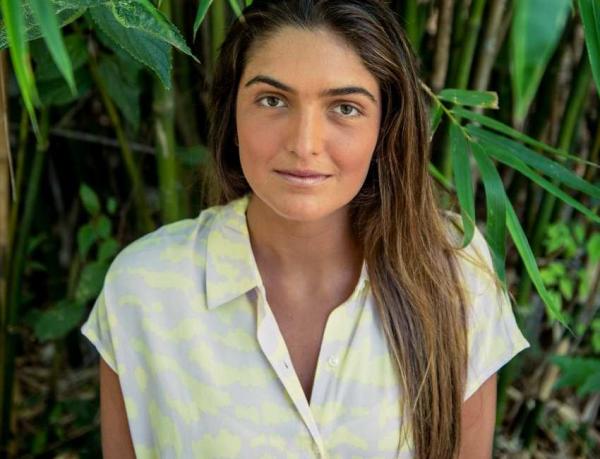-
Register/Login on Totallympics!
Sign up to Totallympics to get full access to our website.
Registration is free and allows you to participate in our community. You will then be able to reply to threads and access all pages.
If you encounter any issues in the registration process, please send us a message in the Contact Us page.
We are excited to see you on Totallympics, the home of Olympic Sports!
-
Posts
8,268 -
Joined
-
Last visited
-
Days Won
41
Content Type
Forums
Events
Totallympics International Song Contest
Totallympics News
Qualification Tracker
Test
Everything posted by rybak
-

Totallympics Annual International Song Contest 2021
rybak replied to rybak's topic in Totallympics International Song Contest
AFTER 31/37 JURIES Brazil +1 045 Ireland +0 143 India +0 046 Romania +0 061 Malta +6 058 Spain +0 050 Sweden +4 127 Serbia +0 041 Portugal +0 029 Czech Republic +3 065 Argentina +0 031 Italy +0 109 Canada +10 153 Tunisia +0 044 Greece +0 081 United States +12 083 Netherlands +0 076 Moldova +0 028 Croatia +8 052 Germany +0 048 Bulgaria +0 068 China +0 047 Norway +0 073 Slovakia +0 051 Hungary +0 062 Israel +2 097 Denmark +0 061 Finland +0 080 Mexico +0 039 Kazakhstan +0 027 Great Britain +7 058 Indonesia +9 090 New Zealand +0 040 Poland +5 074 France +0 072 Lithuania +11 046 Slovenia +0 063 Thank you Hungary, Canada leads by 10 points over Ireland, but Sweden is still close! Also very good result for Israel and Indonesia to be honest! Move to Denmark and @Agger @Wumo -

Totallympics Annual International Song Contest 2021
rybak replied to rybak's topic in Totallympics International Song Contest
Ok, it's my first and lone attempt, we will not got any points anymore -

Totallympics Annual International Song Contest 2021
rybak replied to rybak's topic in Totallympics International Song Contest
AFTER 30/37 JURIES Brazil +0 044 Ireland +7 143 India +0 046 Romania +10 061 Malta +0 052 Spain +0 050 Sweden +0 123 Serbia +4 041 Portugal +0 029 Czech Republic +0 062 Argentina +0 031 Italy +0 109 Canada +11 143 Tunisia +0 044 Greece +0 081 United States +8 071 Netherlands +12 076 Moldova +0 028 Croatia +0 044 Germany +0 048 Bulgaria +0 068 China +0 047 Norway +0 073 Slovakia +2 051 Hungary +0 062 Israel +3 095 Denmark +5 061 Finland +0 080 Mexico +0 039 Kazakhstan +1 027 Great Britain +0 051 Indonesia +0 081 New Zealand +9 040 Poland +6 075 France +0 072 Lithuania +0 035 Slovenia +0 063 Thank you Norway, things are getting closer and closer as we have tie! Good evening Hungary and @Vektor, may I please for your votes? -

Totallympics Annual International Song Contest 2021
rybak replied to rybak's topic in Totallympics International Song Contest
NORWAY NETHERLANDS 12 CANADA 11 ROMANIA 10 NEW ZEALAND 9 UNITED STATES 8 IRELAND 7 POLAND 6 DENMARK 5 SERBIA 4 ISRAEL 3 SLOVAKIA 2 KAZAKHSTAN 1 Goodbye from jury in National language English Translation of Goodbye This was voting from the Vikings country. Bye and see you next time! -

Totallympics Annual International Song Contest 2021
rybak replied to rybak's topic in Totallympics International Song Contest
NORWAY CANADA 11 ROMANIA 10 NEW ZEALAND 9 UNITED STATES 8 IRELAND 7 POLAND 6 DENMARK 5 SERBIA 4 ISRAEL 3 SLOVAKIA 2 KAZAKHSTAN 1 -

Totallympics Annual International Song Contest 2021
rybak replied to rybak's topic in Totallympics International Song Contest
NORWAY Greeting from jury in National language English Translation of Greeting Hi, this is Norwegian jury voting! ROMANIA 10 NEW ZEALAND 9 UNITED STATES 8 IRELAND 7 POLAND 6 DENMARK 5 SERBIA 4 ISRAEL 3 SLOVAKIA 2 KAZAKHSTAN 1 -

Totallympics Annual International Song Contest 2021
rybak replied to rybak's topic in Totallympics International Song Contest
AFTER 29/37 JURIES Brazil +0 044 Ireland +1 136 India +0 046 Romania +0 051 Malta +0 052 Spain +0 050 Sweden +0 123 Serbia +5 037 Portugal +0 029 Czech Republic +8 062 Argentina +0 031 Italy +0 109 Canada +2 132 Tunisia +0 044 Greece +7 081 United States +3 063 Netherlands +0 064 Moldova +0 028 Croatia +0 044 Germany +0 048 Bulgaria +0 068 China +0 047 Norway +4 073 Slovakia +0 049 Hungary +0 062 Israel +12 092 Denmark +0 056 Finland +9 080 Mexico +0 039 Kazakhstan +0 026 Great Britain +0 051 Indonesia +6 081 New Zealand +0 031 Poland +0 063 France +0 072 Lithuania +0 035 Slovenia +11 063 Thank you Bulgaria for votes, another big points for Israel, already almost 100. Not too many changes in top3 anyway, @Skijumpingmaster, may we please for your votes? -

Totallympics Annual International Song Contest 2021
rybak replied to rybak's topic in Totallympics International Song Contest
AFTER 28/37 JURIES Brazil +0 044 Ireland +0 135 India +0 046 Romania +0 051 Malta +0 052 Spain +0 050 Sweden +0 123 Serbia +0 032 Portugal +0 029 Czech Republic +0 054 Argentina +0 031 Italy +0 099 Canada +0 130 Tunisia +0 044 Greece +0 074 United States +0 060 Netherlands +0 064 Moldova +0 028 Croatia +0 044 Germany +0 048 Bulgaria +0 068 China +0 047 Norway +0 069 Slovakia +0 049 Hungary +0 062 Israel +0 080 Denmark +0 056 Finland +0 071 Mexico +0 039 Kazakhstan +0 026 Great Britain +0 051 Indonesia +0 075 New Zealand +0 031 Poland +0 063 France +0 072 Lithuania +0 035 Slovenia +0 052 Welcome back to last session of TAISC 2021! @Federer91, may I please for your votes? -

Totallympics Annual International Song Contest 2021
rybak replied to rybak's topic in Totallympics International Song Contest
AFTER 28/37 JURIES Brazil +0 044 Ireland +0 135 India +0 046 Romania +0 051 Malta +0 052 Spain +0 050 Sweden +0 123 Serbia +0 032 Portugal +0 029 Czech Republic +0 054 Argentina +10 031 Italy +0 099 Canada +0 130 Tunisia +3 044 Greece +0 074 United States +6 060 Netherlands +12 064 Moldova +4 028 Croatia +0 044 Germany +0 048 Bulgaria +8 068 China +0 047 Norway +5 069 Slovakia +0 049 Hungary +0 062 Israel +11 080 Denmark +7 056 Finland +0 071 Mexico +0 039 Kazakhstan +2 026 Great Britain +0 051 Indonesia +9 075 New Zealand +1 031 Poland +0 063 France +0 072 Lithuania +0 035 Slovenia +0 052 Thank you Croatia for nice words and points. It was last voting in this session. Ireland leads with 135, but Canada have 130 and Sweden 123, everything is yet possible! See you in half hour at 20:00 CET (GMT+2) -

Totallympics Annual International Song Contest 2021
rybak replied to rybak's topic in Totallympics International Song Contest
Probably no, since I don't remember when last time I give them new points in the scoreboard, maybe something 4 hours ago or so. -

Totallympics Annual International Song Contest 2021
rybak replied to rybak's topic in Totallympics International Song Contest
AFTER 27/37 JURIES Brazil +0 044 Ireland +0 135 India +0 046 Romania +0 051 Malta +10 052 Spain +3 050 Sweden +4 123 Serbia +0 032 Portugal +0 029 Czech Republic +0 054 Argentina +0 021 Italy +5 099 Canada +0 130 Tunisia +6 041 Greece +0 074 United States +12 054 Netherlands +0 052 Moldova +0 024 Croatia +0 044 Germany +0 048 Bulgaria +0 060 China +0 047 Norway +9 064 Slovakia +0 049 Hungary +0 062 Israel +0 069 Denmark +0 049 Finland +11 071 Mexico +7 039 Kazakhstan +0 024 Great Britain +8 051 Indonesia +0 066 New Zealand +2 030 Poland +0 063 France +1 072 Lithuania +0 035 Slovenia +0 052 Thank you Netherlands/Holland/Países Baixos/whathever for your votes Not let's move to the last jury in this session and last voting before last break, Croatia and @dcro -

Totallympics Annual International Song Contest 2021
rybak replied to rybak's topic in Totallympics International Song Contest
AFTER 26/37 JURIES Brazil +12 044 Ireland +0 135 India +3 046 Romania +10 051 Malta +0 042 Spain +0 047 Sweden +0 119 Serbia +6 032 Portugal +0 029 Czech Republic +0 054 Argentina +0 021 Italy +0 094 Canada +9 130 Tunisia +0 035 Greece +0 074 United States +0 042 Netherlands +0 052 Moldova +2 024 Croatia +5 044 Germany +0 048 Bulgaria +8 060 China +0 047 Norway +0 055 Slovakia +0 049 Hungary +0 062 Israel +0 069 Denmark +0 049 Finland +0 060 Mexico +0 032 Kazakhstan +11 024 Great Britain +0 043 Indonesia +0 066 New Zealand +0 028 Poland +1 063 France +7 071 Lithuania +0 035 Slovenia +4 052 Thank you Greece! Now let's move to Holland and @heywoodu votes! -

Totallympics Annual International Song Contest 2021
rybak replied to rybak's topic in Totallympics International Song Contest
@Laraja and @titicow probably fallen down from their chairs now -

Totallympics Annual International Song Contest 2021
rybak replied to rybak's topic in Totallympics International Song Contest
How many points had in last Annual? I don't have now time for checking it -

Totallympics Annual International Song Contest 2021
rybak replied to rybak's topic in Totallympics International Song Contest
AFTER 25/37 JURIES Brazil +3 032 Ireland +12 135 India +2 043 Romania +6 041 Malta +0 042 Spain +0 047 Sweden +0 119 Serbia +4 026 Portugal +5 029 Czech Republic +0 054 Argentina +0 021 Italy +0 094 Canada +0 121 Tunisia +8 035 Greece +0 074 United States +9 042 Netherlands +10 052 Moldova +0 022 Croatia +0 039 Germany +0 048 Bulgaria +0 052 China +0 047 Norway +0 055 Slovakia +7 049 Hungary +0 062 Israel +0 069 Denmark +0 049 Finland +0 060 Mexico +11 032 Kazakhstan +1 013 Great Britain +0 043 Indonesia +0 066 New Zealand +0 028 Poland +0 062 France +0 064 Lithuania +0 035 Slovenia +0 048 Thank you Canada. A big lead for Ireland now! Now let's back to Europe, to first time multi jury from Greece, @Yannakis, can you give us Greek votes? -

Totallympics Annual International Song Contest 2021
rybak replied to rybak's topic in Totallympics International Song Contest
He wanted move some innocent souls, not win the contest -

Totallympics Annual International Song Contest 2021
rybak replied to rybak's topic in Totallympics International Song Contest
Kazakhstan is last with 12 points -

Totallympics Annual International Song Contest 2021
rybak replied to rybak's topic in Totallympics International Song Contest
AFTER 24/37 JURIES Brazil +0 029 Ireland +11 123 India +0 041 Romania +0 035 Malta +0 042 Spain +0 047 Sweden +0 119 Serbia +0 022 Portugal +0 024 Czech Republic +7 054 Argentina +0 021 Italy +0 094 Canada +12 121 Tunisia +8 027 Greece +1 074 United States +0 033 Netherlands +0 042 Moldova +0 022 Croatia +10 039 Germany +0 048 Bulgaria +0 052 China +0 047 Norway +6 055 Slovakia +0 042 Hungary +3 062 Israel +0 069 Denmark +0 049 Finland +2 060 Mexico +0 021 Kazakhstan +0 012 Great Britain +0 043 Indonesia +4 066 New Zealand +9 028 Poland +5 062 France +0 064 Lithuania +0 035 Slovenia +0 048 Thank you Argentina. Now let's move to northern part of American continent and to Canada. @intoronto can you show us your votes? -

Totallympics Annual International Song Contest 2021
rybak replied to rybak's topic in Totallympics International Song Contest
to Algeria and @bestmen -

Totallympics Annual International Song Contest 2021
rybak replied to rybak's topic in Totallympics International Song Contest
No points for Poland from ? TRAITOR!!! -

Totallympics Annual International Song Contest 2021
rybak replied to rybak's topic in Totallympics International Song Contest
AFTER 23/37 JURIES Brazil +0 029 Ireland +0 112 India +0 041 Romania +0 035 Malta +0 042 Spain +6 047 Sweden +11 119 Serbia +0 022 Portugal +0 024 Czech Republic +0 047 Argentina +0 021 Italy +0 094 Canada +10 109 Tunisia +0 019 Greece +9 073 United States +0 033 Netherlands +0 042 Moldova +0 022 Croatia +3 029 Germany +0 048 Bulgaria +0 052 China +5 047 Norway +8 049 Slovakia +0 042 Hungary +0 059 Israel +0 069 Denmark +2 049 Finland +12 058 Mexico +0 021 Kazakhstan +0 012 Great Britain +0 043 Indonesia +0 062 New Zealand +4 019 Poland +0 057 France +7 064 Lithuania +1 035 Slovenia +0 048 Thank you Portugal. Things are getting excited, we have new leader and move now to Argentina and @konig -

Totallympics Annual International Song Contest 2021
rybak replied to rybak's topic in Totallympics International Song Contest
poRTUGAL FINLAND 12 SWEDEN 11 CANADA 10 GREECE 9 NORWAY 8 FRANCE 7 SPAIN 6 CHINA 5 NEW ZEALAND 4 CROATIA 3 DENMARK 2 LITHUANIA 1 Goodbye from jury in National language English Translation of Goodbye This were votes from Portugal. Bye! -

Totallympics Annual International Song Contest 2021
rybak replied to rybak's topic in Totallympics International Song Contest
Any guess for Portuguese 12? -

Totallympics Annual International Song Contest 2021
rybak replied to rybak's topic in Totallympics International Song Contest
Yes, now after Portugal Argentina will present the votes and then will be your turn.
-
Who's Online 12 Members, 0 Anonymous, 804 Guests (See full list)










